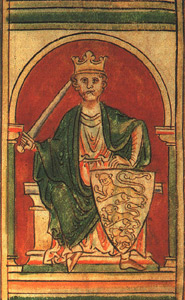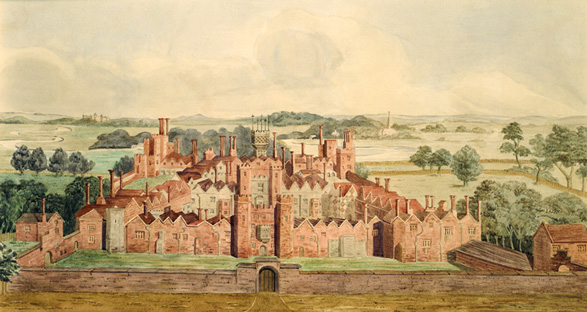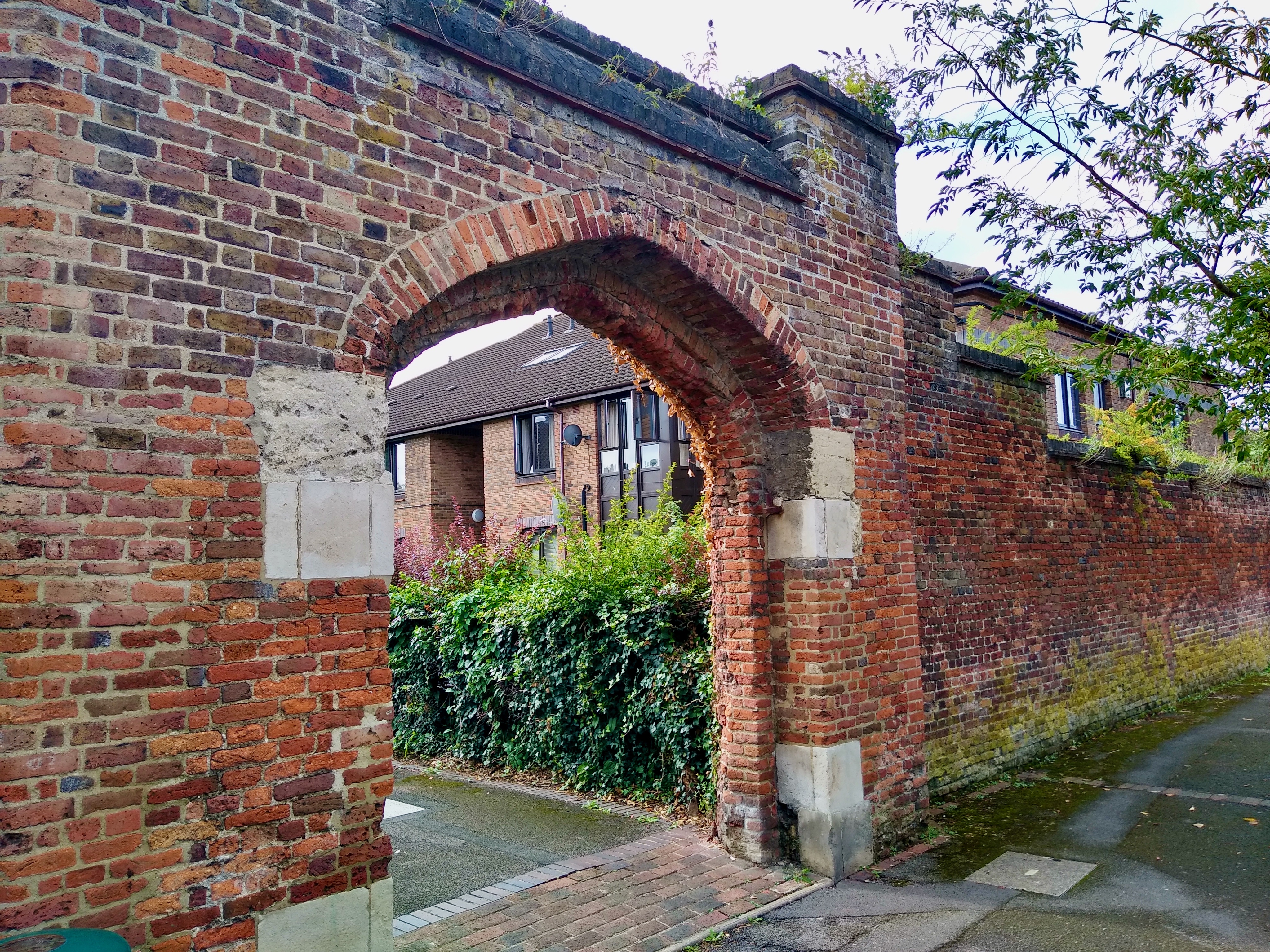|
Walter Tichborne
Walter Tichborne (c.1580–1637) of Aldershot in Hampshire was MP for Petersfield from 1614 to 1621. Early life and marriage He was born in about 1580, the second son of Sir Benjamin Tichborne, (died 1629), the first Tichborne baronet of Tichborne in Hampshire, and his second wife Amphillis Weston, daughter of Richard Weston, justice of the common pleas. His older brother was Sir Richard Tichborne, the second baronet. The Tichbornes were one of the leading Roman Catholic families in the county. He and his brother married two sisters, the co-heiresses of Sir Robert White of Aldershot, with Walter marrying Mary White (c.1581–1621) on 7 May 1597. According to his wife's memorial monument in St Michael's church in Aldershot (see right) they had seven sons and six daughters: Benjamin, Francis, John, Walter, James, Richard and Lionel. Their daughters were Theophila, Frances, Marie, Elisabeth, Charity and Bridget. On their marriages the brothers joined their new wives at Ald ... [...More Info...] [...Related Items...] OR: [Wikipedia] [Google] [Baidu] |
Aldershot
Aldershot () is a town in Hampshire, England. It lies on heathland in the extreme northeast corner of the county, southwest of London. The area is administered by Rushmoor Borough Council. The town has a population of 37,131, while the Aldershot Urban Area, a loose conurbation (which also includes other towns such as Camberley, Farnborough, and Farnham) has a population of 243,344, making it the thirtieth-largest urban area in the UK. Aldershot is known as the "Home of the British Army", a connection which led to its rapid growth from a small village to a Victorian town. History Early history The name may have derived from alder trees found in the area (from the Old English 'alder-holt' meaning copse of alder trees). Any settlement, though not mentioned by name, would have been included as part of the Hundred of Crondall referred to in the Domesday Book of 1086. The Church of St Michael the Archangel is the parish church for the town and dates to the 12th century with la ... [...More Info...] [...Related Items...] OR: [Wikipedia] [Google] [Baidu] |
William Arthur Shaw
William Arthur Shaw (1865–1943) was an English historian and archivist. Life Born on 19 April 1865, in Hooley Hill, Ashton-under-Lyne, now in Greater Manchester, he was the son of James Shaw and his wife Sarah Ann Hampshire. He graduated B.A. at Owens College in 1883. Shaw worked for the Chetham Society, and then the Public Record Office, as an editor. In 1940 he was elected a Fellow of the British Academy. He died on 15 April 1943. The majority of his later life was devoted to the calendaring of Treasury records of the later Stuart and early Georgian period, between 1660 and 1745. These were published with extensive introductions, charting his view of the development of the national financial administration and other topics, and often challenging the received wisdom. F.H. Slingsby, who brought Shaw's posthumous final volumes to press, considered that the "animosities" expressed in some of these introductions were "usually well founded"; although P.G.M. Dickson considere ... [...More Info...] [...Related Items...] OR: [Wikipedia] [Google] [Baidu] |
Recusancy
Recusancy (from la, recusare, translation=to refuse) was the state of those who remained loyal to the Catholic Church and refused to attend Church of England services after the English Reformation. The 1558 Recusancy Acts passed in the reign of Elizabeth I, and temporarily repealed in the Interregnum (1649–1660), remained on the statute books until 1888. They imposed punishments such as fines, property confiscation and imprisonment on recusants. The suspension under Oliver Cromwell was mainly intended to give relief to nonconforming Protestants rather than to Catholics, to whom some restrictions applied into the 1920s, through the Act of Settlement 1701, despite the 1828 Catholic Emancipation. In some cases those adhering to Catholicism faced capital punishment, and some English and Welsh Catholics who were executed in the 16th and 17th centuries have been canonised by the Catholic Church as martyrs of the English Reformation. Definition Today, ''recusant'' applies to th ... [...More Info...] [...Related Items...] OR: [Wikipedia] [Google] [Baidu] |
House Of Commons Of The United Kingdom
The House of Commons is the lower house of the Parliament of the United Kingdom. Like the upper house, the House of Lords, it meets in the Palace of Westminster in London, England. The House of Commons is an elected body consisting of 650 members known as members of Parliament (MPs). MPs are elected to represent constituencies by the first-past-the-post system and hold their seats until Parliament is dissolved. The House of Commons of England started to evolve in the 13th and 14th centuries. In 1707 it became the House of Commons of Great Britain after the political union with Scotland, and from 1800 it also became the House of Commons for Ireland after the political union of Great Britain and Ireland. In 1922, the body became the House of Commons of the United Kingdom of Great Britain and Northern Ireland after the independence of the Irish Free State. Under the Parliament Acts 1911 and 1949, the Lords' power to reject legislation was reduced to a delaying power. The g ... [...More Info...] [...Related Items...] OR: [Wikipedia] [Google] [Baidu] |
Sir Richard Norton, 1st Baronet
Sir Richard Norton, 1st Baronet (c. 1582 – June 1646) was an English politician who sat in the House of Commons from 1621 to 1622. He supported the Royalist cause in the English Civil War. In March 1608, Norton was set to join an embassy to Florence with the diplomat Stephen Lesieur. He was challenged to a duel by Henry Clare (a follower of the Earl of Montgomery) for wrongs done to his sister. Lesieur wrote to the Earl of Salisbury to prevent a fight. Trouble was avoided and Norton joined the embassy.''HMC Salisbury Hatfield'', vol. 20 (London, 1968), pp. 110–1. Norton was the son of Sir Richard Norton, of East Tisted, Hampshire and his wife Mabel Beecher, daughter of Henry Becher, Alderman of London. He matriculated at Queen's College, Oxford on 14 October 1597, aged 15. In 1602, he entered Middle Temple. He was knighted at Hampton Court on 10 January 1611. He was High Sheriff of Hampshire from 1613 to 1614. In 1621, he was elected Member of Parliament for Petersfield. He wa ... [...More Info...] [...Related Items...] OR: [Wikipedia] [Google] [Baidu] |
Isle Of Wight
The Isle of Wight ( ) is a county in the English Channel, off the coast of Hampshire, from which it is separated by the Solent. It is the largest and second-most populous island of England. Referred to as 'The Island' by residents, the Isle of Wight has resorts that have been popular holiday destinations since Victorian times. It is known for its mild climate, coastal scenery, and verdant landscape of fields, downland and chines. The island is historically part of Hampshire, and is designated a UNESCO Biosphere Reserve. The island has been home to the poets Algernon Charles Swinburne and Alfred, Lord Tennyson. Queen Victoria built her summer residence and final home, Osborne House at East Cowes, on the Isle. It has a maritime and industrial tradition of boat-building, sail-making, the manufacture of flying boats, hovercraft, and Britain's space rockets. The island hosts annual music festivals, including the Isle of Wight Festival, which in 1970 was the largest rock music ... [...More Info...] [...Related Items...] OR: [Wikipedia] [Google] [Baidu] |
Farnham Castle
Farnham Castle is a 12th-century castle in Farnham, Surrey, England. It was formerly the residence of the Bishops of Winchester. History Built in 1138 by Henri de Blois, Bishop of Winchester, grandson of William the Conqueror, Farnham castle became the home of the Bishops of Winchester for over 800 years. The original building was demolished by Henry II in 1155 after ' the Anarchy' and then rebuilt in the late 12th and early 13th centuries. In the early 15th century, it was the residence of Cardinal Henry Beaufort who presided at the trial of Joan of Arc in 1431. It is for this reason that St Joan of Arc's Church in Farnham is dedicated to her. The castle's architecture reflects changing styles through the ages, making it one of the most important historical buildings in the south of England. It is an impressive stone motte and bailey fortress, and has been in almost continuous occupation since the 12th century. The large motte was formed around the massive foundations ... [...More Info...] [...Related Items...] OR: [Wikipedia] [Google] [Baidu] |
Surrey
Surrey () is a ceremonial and non-metropolitan county in South East England, bordering Greater London to the south west. Surrey has a large rural area, and several significant urban areas which form part of the Greater London Built-up Area. With a population of approximately 1.2 million people, Surrey is the 12th-most populous county in England. The most populated town in Surrey is Woking, followed by Guildford. The county is divided into eleven districts with borough status. Between 1893 and 2020, Surrey County Council was headquartered at County Hall, Kingston-upon-Thames (now part of Greater London) but is now based at Woodhatch Place, Reigate. In the 20th century several alterations were made to Surrey's borders, with territory ceded to Greater London upon its creation and some gained from the abolition of Middlesex. Surrey is bordered by Greater London to the north east, Kent to the east, Berkshire to the north west, West Sussex to the south, East Sussex to ... [...More Info...] [...Related Items...] OR: [Wikipedia] [Google] [Baidu] |
Magistrate (England And Wales)
Magistrates are trained volunteers, selected from the local community, who deal with a wide range of criminal and civil proceedings. They are also known as Justices of the Peace. In the adult criminal court, magistrates decide on offences which carry up to twelve months in prison, or an unlimited fine. Magistrates also sit in the family court where they help resolve disputes that involve children, and in the youth court which deals with criminal matters involving young people aged 10-17. Established over 650 years ago, the magistracy is a key part of the judiciary of England and Wales, and it is a role underpinned by the principles of 'local justice' and 'justice by one's peers'. Magistrates typically sit as a bench of three, mixed in gender, age and ethnicity where possible, to bring a broad experience of life to the bench. They can sit alone to hear warrant applications or deal with uncontested matters heard under the single justice procedure. All members of the bench have e ... [...More Info...] [...Related Items...] OR: [Wikipedia] [Google] [Baidu] |
Union Building, Aldershot
The Union Building on Hospital Hill in Aldershot in Hampshire is a Grade II listed building on the Register of Historic England.Old Union Poor House (Workhouse): A Grade II Listed Building in Aldershot, Hampshire Historic England Listed Building Register A former sub-manor of the Tichborne Family, it was later used as the Aldershot Workhouse and as the District School set up in 1849/50 by two Poor Law Unions, referred to as the Union Building in the 1851 Census. It was later purchased as one of the first permanent Camp buildings of the |
Weybridge
Weybridge () is a town in the Borough of Elmbridge in Surrey, England, around southwest of central London. The settlement is recorded as ''Waigebrugge'' and ''Weibrugge'' in the 7th century and the name derives from a crossing point of the River Wey, which flows into the River Thames to the north of the town centre. The earliest evidence of human activity is from the Bronze Age. During the Anglo-Saxon and medieval periods, Weybridge was held by Chertsey Abbey. In the 1530s, Henry VIII constructed Oatlands Palace to the north of the town centre, which he intended to be the residence of his fourth wife, Anne of Cleves. He married Catherine Howard there in July 1540 and the palace remained a royal residence until the Civil War. The buildings were demolished in the early 1650s and a new mansion, Oatlands House, was constructed to the east of Weybridge later the same century. Prince Frederick, Duke of York and Albany owned the mansion in the 18th century. The town began to ex ... [...More Info...] [...Related Items...] OR: [Wikipedia] [Google] [Baidu] |
Oatlands Palace
Oatlands Palace is a former Tudor and Stuart royal palace which took the place of the former manor of the village of Oatlands near Weybridge, Surrey. Little remains of the original building, so excavations of the palace took place in 1964 to rediscover its extent. Palace Much of the foundation stone for the palace came from Chertsey Abbey which fell into ruins after the Dissolution of the Monasteries. Henry VIII came to Oatlands on a progress in September 1514 and hunted stags on Chertsey Meads. He acquired the house in 1538, and rebuilt it for Anne of Cleves. The palace was built around three main adjoining quadrangular courtyards covering fourteen hectares and utilising an existing 15th-century moated manor house. A bed made for Anne of Cleves was described in an inventory of Oatlands. "Quene Annes bedd" had curtains of crimson cloth of gold and cloth of silver decorated with borders of purple velvet on the seams. It featured 108 embroidered badges of Anne and Henry a ... [...More Info...] [...Related Items...] OR: [Wikipedia] [Google] [Baidu] |








